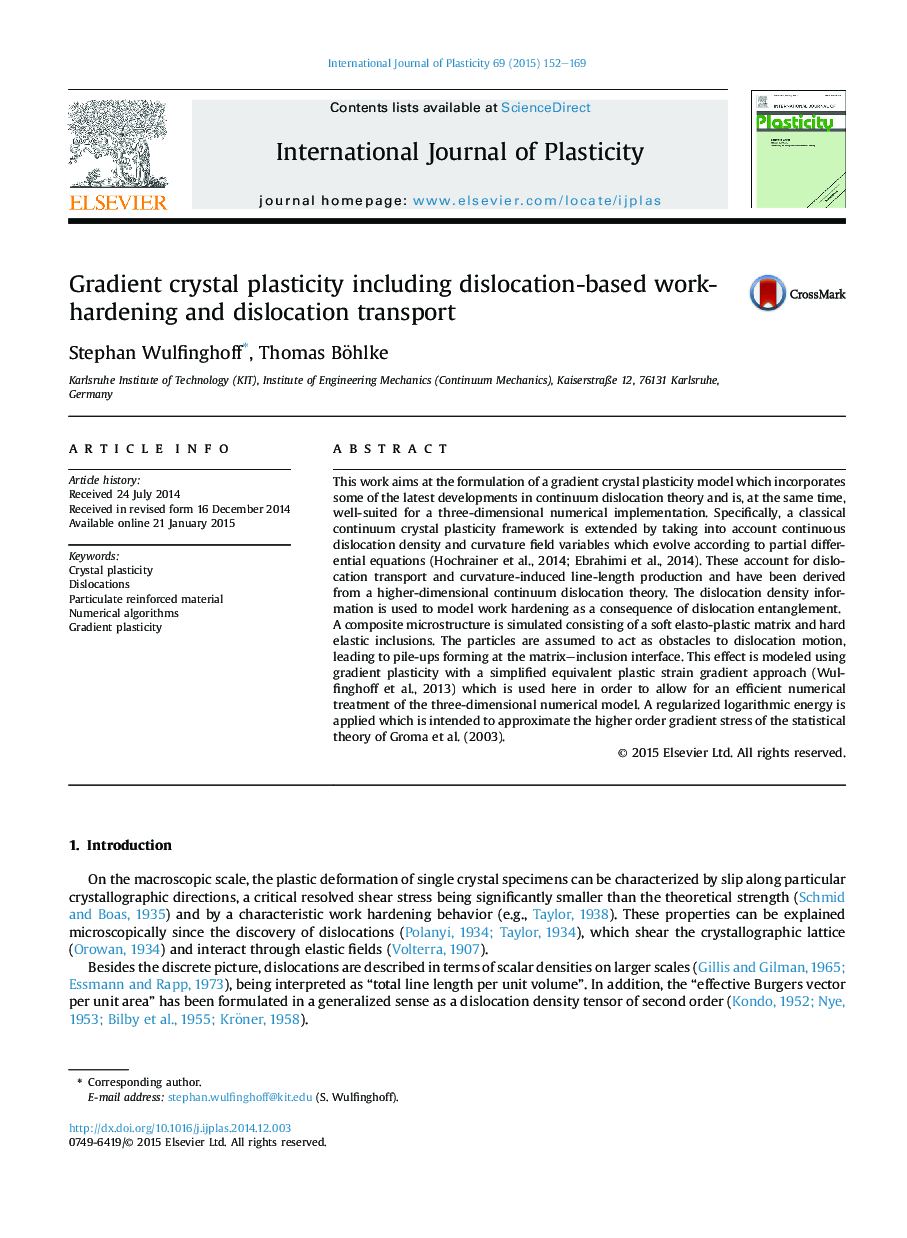| Article ID | Journal | Published Year | Pages | File Type |
|---|---|---|---|---|
| 786432 | International Journal of Plasticity | 2015 | 18 Pages |
•A gradient crystal plasticity model using continuum dislocation dynamics is proposed.•The model is well-suited for a three-dimensional numerical implementation.•Dislocation density and curvature field variables evolve according to PDEs.•A composite microstructure is simulated.•Strain gradient effects are modeled by an equivalent plastic strain gradient.
This work aims at the formulation of a gradient crystal plasticity model which incorporates some of the latest developments in continuum dislocation theory and is, at the same time, well-suited for a three-dimensional numerical implementation. Specifically, a classical continuum crystal plasticity framework is extended by taking into account continuous dislocation density and curvature field variables which evolve according to partial differential equations (Hochrainer et al., 2014; Ebrahimi et al., 2014). These account for dislocation transport and curvature-induced line-length production and have been derived from a higher-dimensional continuum dislocation theory. The dislocation density information is used to model work hardening as a consequence of dislocation entanglement.A composite microstructure is simulated consisting of a soft elasto-plastic matrix and hard elastic inclusions. The particles are assumed to act as obstacles to dislocation motion, leading to pile-ups forming at the matrix–inclusion interface. This effect is modeled using gradient plasticity with a simplified equivalent plastic strain gradient approach (Wulfinghoff et al., 2013) which is used here in order to allow for an efficient numerical treatment of the three-dimensional numerical model. A regularized logarithmic energy is applied which is intended to approximate the higher order gradient stress of the statistical theory of Groma et al. (2003).
